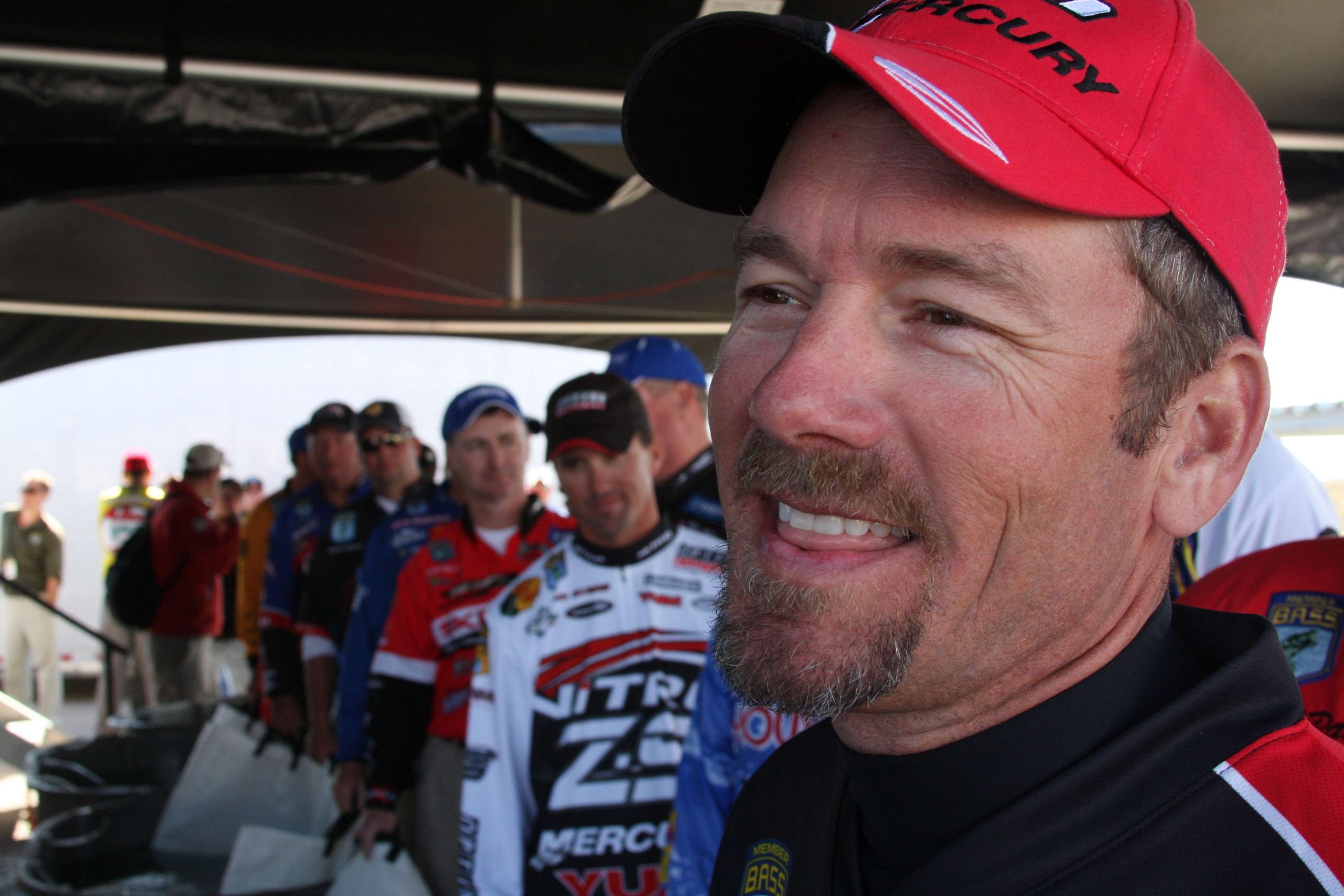
There are various theories as to why you find bass in the backs of creeks during the fall. Do the shad go there first, and then the bass follow, seeking a food source? Or are bass simply moving shallow because the water surface temperature is cooling?
Bassmaster Elite Series pro Stephen Browning isn’t sure which is correct, and he doesn’t spend much time thinking about it. He is certain of one thing: Fall is his favorite time of year to fish.
“You read a lot about them following shad into the backs of creeks,” Browning said. “Shoot, there’s shad in the backs of creeks all the time. Personally, I just think bass move into that shallow water and know it’s time to start gorging.”
For Browning, who lives in Hot Springs, Ark., fall presents a challenge in deciding where to spend his time outdoors. He loves to deer hunt almost as much as he loves to bass fish.
“It’s my favorite time,” Browning said. “The deer hunters are in the woods and the fishermen are out there on the lakes.
“To me, it’s the best time, without a doubt, to bass fish. You can catch them shallow, and I like to fish shallow, so that’s a bonus.”
When fishing for shallow bass, Browning likes to start on top.
“I like topwater baits, and I’ve always been a big double-prop guy,” he said. “Something in a shad pattern is best. I like buzzbaits, too. Anything that imitates that gurgling sound of a shad getting busted by another fish, that’s what I start off with.”
Live Target makes a Blueback Herring Double Prop bait that Browning likes.
“It mimics shad,” Browning said. “I’d start with it in the very, very back end of creeks. What I look for is where you can almost see the bottom, then that little break. It’s a foot-and-a-half to two-foot break most of the time.”
If Browning can’t find the action he wants on a topwater bait, he’ll switch to either a spinnerbait or a shallow-diving crankbait. He prefers a War Eagle Screaming Eagle spinnerbait with a chartreuse-and-black or “chartreuse and something” skirt.
“That Screaming Eagle is a half-ounce bait on a quarter-ounce frame,” Browning said. “You can burn it; you can slow roll it; you can do about anything in the world you want to with it. That’s what makes it so good. It’s just a fish-catching son-of-a-gun in the fall of the year.”
When he switches to a crankbait, Browning uses a Live Target Crawfish.
“It looks like a crawfish, but what I use it for is to dig around in the mud flats and chunk rock banks,” Browning said. “I also roll it through timber and isolated logs in the back end of creeks.
“I think it’s more of a reaction bite. If you get a high sky — one of those bluebird days — and fish are extremely tight to cover, you can bang that crankbait in the cover and get them to react to it. The conditions have to be right, and normally that’s those high, bright days.
“If fish are chasing, I’m going to opt for the topwater baits and the spinnerbait. I’ll try to cover as much water as I can until I find out what section of the creek they might be in."
Browning begins his fall fishing methods when the water surface temperature drops into the 70s. He’ll start at the very back end of a creek, then work his way out.
“You might catch them on a channel-swing bank going back into a creek,” Browning said. “But it would be in 10- to 12-feet of water, max. Other than that, I’m going to be fishing in six feet of water or less.”
To cast his preferred baits, Browning likes a 7-foot rod, like the St. Croix Legend Extreme. He prefers 16- or 20-pound test Gamma fluorocarbon line.
“I don’t even own a spool of monofilament anymore,” Browning said. “It’s either braid or fluorocarbon for me. I can feel what my bait is doing so much better with fluorocarbon than I can with mono.
“I adjust my rods to a little bit lighter action to balance out the lack of stretch. I might go to a medium action with the crankbaits.”
No matter the time of year, Browning will have a jig tied to one of the rods on his boat deck.
“I’ve got to have a jig on,” Browning said. “In the fall, I like a Jewel Bait Company Eakins 5/16-ounce finesse jig. That’s just a good bait that I’m going to use on those high pressure, bright days.
“It’s more to imitate a crawfish. I promise you that when a crawfish sticks its nose out of the dirt, no matter what time of year, he’s going to get eaten.”
Browning gets excited just talking about fall bass fishing.
“It’s without a doubt the best time,” he said. “You catch more fish in the fall — especially toward the end of the fall — and they are as healthy as they are at any time of the year.”
Originally published September 2011




